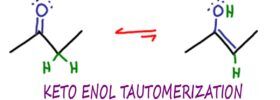Below is the written transcript of my YouTube tutorial video Naming Alkenes.
If you prefer to watch it, see Video HERE, or catch the entire Naming Organic Compounds Series.
[Start Transcript]
Leah here from leah4sci.com and this video, I will show you how to name alkene compounds. Before we name alkenes we have to understand what is the functional group in this molecule. An alkene is a molecule that has the carbon to carbon double bond or a pi bond between two carbons is sp2 hybridized and has a bonding of one hundred and twenty degrees at the Alkene Functional group. If you analyze the hydrogen deficiency you’ll realize that every pi bond gives you one deficiency and therefore the standard Alkene follows the formula CnH2n as opposed to an alkane which follows the formula CnH2n+2. This hydrogen deficiency or degree of unsaturation comes from the fact that when you add a double bond or a second bond between two carbon atoms every carbon now has pi bonds and so you have to remove 2 hydrogen to keep each carbon within the octet rule. You can have a molecule that has multiple pi bonds as long as the pi bonds are between different sets of carbons, it still qualifies as an alkene. But don’t confuse a diene with a molecule that has 2 pi bonds between the same two sets of carbons giving you an alkyne rather than a diene . When it comes to naming an alkene,we follow the same rules that we introduced in the first video, however, we use the last name of ene rather than ane when naming the Parent Chain.
Let’s start with this simple example. In this case the entire molecule is my parent chain and I have the option to number from the left or from the right. When I number from the left, I hit the double bond on carbon #2, when I number from the right, I hit the double bond on carbon #4. If there are no higher priority substituents, you wanna make sure that the double bond gets the lowest number and so we have to number from the left. Since I have 6 carbons in this molecule, I get a first name of hex, having a double bond gives me a last name of ene. And I have to specify where an alkene occurs.
Since the pi bond occurs between the carbons 2 and carbons 3, we’ll use carbon 2 because that is the first or the lowest number where the double bond occurs. Since I have nothing else in the molecule, I have a final name of 2-hexene.
However, you may sometimes see this molecule as hex-2-ene, this is just another way to show that the ene occurs in carbon number 2. When you have simple molecule, it is preferred to keep the number the front. However when you have multiple substituents it is better that each number precedes the substituents or functional group that it defines.
Let’s try another example. In this case, recognize that I can number from both the left or the right to hit the double bond at carbon number 2. However, in this molecule I also have to count from my substituent. If I number from the left, the methyl group is on carbon 2. If I number from the right, it would be carbon 3 and so ones again, I have to number from the left. Having 4 carbon on my parent chain gives me first name of but, the double bond gives me a last name of ene, preceded by 2 given that it starts on the second carbon, my 1 carbon substituent on carbon 2 gives me a prefix of 2-methyl for a final name of 2-methyl-2butene.
When you have a pi bond that occurs in a cyclic compound you treat it just like a linear molecule, however when you number it you have to ensure that both the first and second carbon of the double bond have the consecutive numbers. Meaning if I choose the top carbon holding the pi bonds be number 1, I have to continue counter clockwise so that the second carbon on the pi bond gets number 2. If instead I chose to go clockwise, the pi bond would have non consecutive numbers of 1 and 5 which would be incorrect. Having 5 carbons in my parent chain gives me a first name of “pent”, because it’s a ring I have to precede that with the word “cyclo”, a double bond between carbon 1 and 2 would give me an 1-ene. However since this is the only substituent on the molecule, the 1 will be understood and doesn’t have to be written out. This gives me a final name of cyclopentane.
When you have a ring of a pi bond and a substituent, of 2 carbons holding the pi bond gets higher priority than an alkyl substituent. If I choose the top carbon to be number 1, I am forced to number clockwise so that the second sp2 carbon gets the number 2 and this gives the methyl substituent a number 4. Having 6 carbons in my chain gives me a first name of “hex” , the ring gives me the prefix of “cyclo”. since the pi bond is highest priority, even though it occurs at carbon #1, it will be self understood. The one carbon substituent occurs at carbon #4 giving me the prefix of 4 methyl for a final name of 4-methyl-cyclohexene.
When you have more than 1 double bond in your parent chain, you treat the naming in the same way and simply place the prefix “di” before the word ene to show that you have 2 double bonds.
Using this example, we start by highlighting the parent chain. I’m numbering from the left because the pi bond occurs at the first carbon. Having 7 carbons in the molecule gives me a first name of “hept”, given that I have 2 double bonds, I get the last name of diene to show that I have 2 pi bonds , and I precede with the numbers 1,4 because you number the first carbon for each pi bond rather than the second. A single carbon substituent on carbon 3 gives me the prefix of 3-methyl for a final name of 3-methyl-1,4-heptadiene.
We’ll end this video with an interesting example. It appears that we have a double bond off a parent chain as a substituent , however, if this is my parent chain, I can simply count 1 as p2 carbon without its partner and so the actual parent chain has to include both carbons of the double bond and then the rest of the chain. I start numbering from the first carbon of the double bond for a total of 5 carbons which gives me a first name of “pent”. Since the double bond occurs at carbon 1, I have the last name of 1-ene. And ones again I have a 1 carbon substituent on carbon 2, giving me a prefix of 2-methyl. This gives me a final name of 2-methyl-1-pentene.
Are you struggling with Organic Chemistry? Are you looking for an information that can guide you through the course and help you succeed? If so, download my eBook, 10 Secrets to Acing Organic Chemistry using the link below or visit leah4sci.com/Orgosecrets, that’s ORGO Secrets. For information regarding Online Tutoring, visit leah4sci.com/OrgoTutor, that’s ORGO Tutor.
If you enjoyed this video, please give it a thumbs up and even share with a friend or two, and if you have a question regarding this video, leave a comment below or contact me thru my Facebook page, at facebook.com/leah4sci. There will be related video posted over the course of semester, so go ahead and click the subscribe button to ensure that you don’t miss out!
[End Transcript]



Leave a Reply